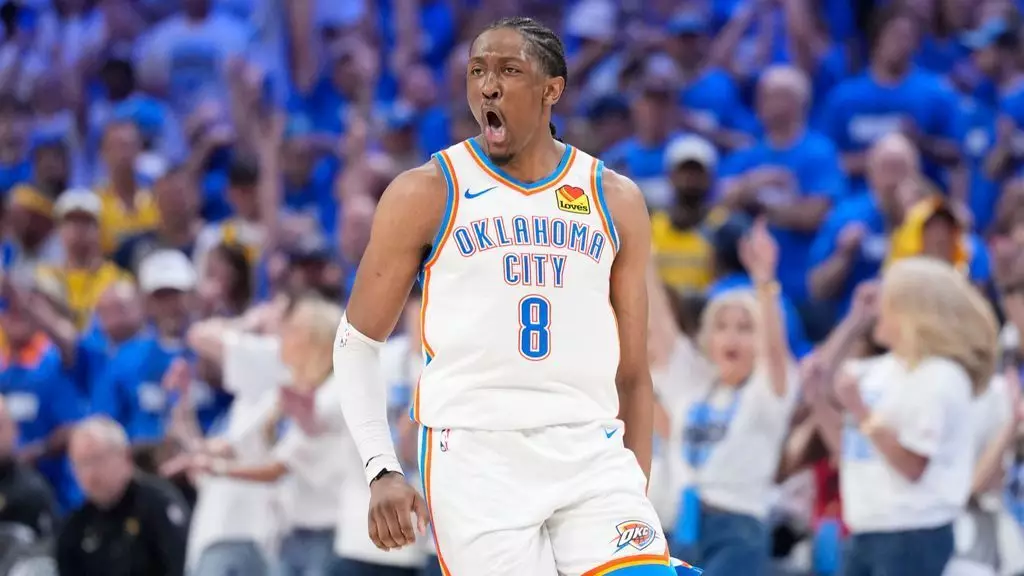The Oklahoma City Thunder’s recent contract extensions signal a bold declaration of intent — a declaration that the franchise is committed to competing at the highest level for years to come. However, beneath the shiny surface of record-breaking contracts and promising young talent lies a complex web of risk, financial strain, and questionable long-term strategy. This team, once dubbed a “rebuilding” franchise, now dares to dream big, but at what cost?
In an era where sports franchises grapple with sustainability amidst skyrocketing player salaries, Oklahoma City’s strategy raises critical questions about priorities and the sustainability of such spending sprees. The team’s front office is clearly betting on the long-term potential of their “Big 3”: Shai Gilgeous-Alexander, Chet Holmgren, and Jalen Williams. While their talent and recent playoff success are undeniable, the sheer magnitude of their contract commitments — approaching $823 million — ignites debate about whether this is a gamble worth taking or a reckless pursuit of fleeting glory.
Player-Centric Focus or Financial Folly?
Jalen Williams’s extension, a five-year maximum rookie contract reportedly worth up to $287 million, symbolizes the team’s belief in youth and potential. Yet, this commitment is a double-edged sword. Williams’s rise has been meteoric; his All-NBA and Defensive Team honors, combined with crucial playoff performances, position him as a cornerstone of Oklahoma City’s future. Nonetheless, tying up such a significant portion of payroll in relatively unproven players is inherently risky.
The same logic applies to the other two stars. Gilgeous-Alexander’s four-year, nearly $285 million deal, and Holmgren’s five-year, $250 million max, push the franchise’s total commitments to staggering levels. This aggressive financial strategy makes Oklahoma City a rarity in the NBA — one that is willing to prioritize current stars despite the long-term implications of luxury tax penalties and roster rigidity.
While it’s commendable to build around youth and promise, this approach also exposes the team to significant vulnerabilities. Injuries, such as Williams’s wrist tear, highlight the fragile nature of relying heavily on young, still-developing players. The injury also raises questions about depth, medical staff, and whether the team is truly prepared for the unpredictable uncertainties of pro sports.
Implications of Wealth and Ambition
The Thunder’s willingness to spend seemingly without regard for immediate financial limits marks a shift in league dynamics. They are filling their roster with long-term deals, betting that these investments will translate into championships within the decade. Yet, the NBA’s evolving salary cap structure and the looming threat of surpassing luxury tax thresholds suggest that their approach could backfire.
Interestingly, despite their hefty payroll — projected to reach $246 million in 2026-27 — Oklahoma City also possesses about $77 million in non-guaranteed contracts. This provides a shrewd cushion of flexibility, allowing them to adapt strategically as opportunities or challenges arise. It’s a calculated risk: Invest heavily now in hopes of capturing a title, but retain enough flexibility to pivot if circumstances shift.
However, this aggressive spending spree could also alienate the franchise’s core values of financial prudence and sustainability. Should injuries or underperformance derail their ambitious plans, the backlash from fans and management could be severe. It raises an unsettling question: Is this boldness merely a short-term attempt to punch above their weight, or a reckless neglect of the long-term health of the franchise?
Politics of Progress: Balancing Ambition with Responsibility
Framing this as a case of responsible progress, one must see Oklahoma City’s strategy as rooted in a broader belief in sports as a vehicle for community pride and economic growth. Yet, liberal-minded critiques would argue that such spending often prioritizes corporate interests over the long-term health of the league and its fans.
If the franchise continues to push boundaries with high salaries and roster gambles, it risks contributing to an increasingly polarized NBA landscape — where a few teams dominate unnaturally due to financial advantages enabled by luxury tax loopholes. This could deepen inequalities within the league, marginalizing smaller-market teams and undermining the meritocratic ideal of competitive balance.
The Thunder’s approach embodies a paradox: their ambition is undeniably admirable, but their financial bravado could be a distraction from more sustainable models of team-building. Balancing ambition with responsibility — ensuring that the pursuit of excellence does not come at the expense of stability — is essential for the league’s future and the integrity of competition.
In the end, Oklahoma City’s latest chapter serves as a microcosm of modern sports: a spectacle of immense talent, enormous spending, and inherent risks, all wrapped in the relentless pursuit of instant glory. Whether this gamble pays dividends or leads to a long-term downfall remains to be seen, but one thing is clear — they are playing a high-stakes game with the future of the franchise hanging in the balance.

